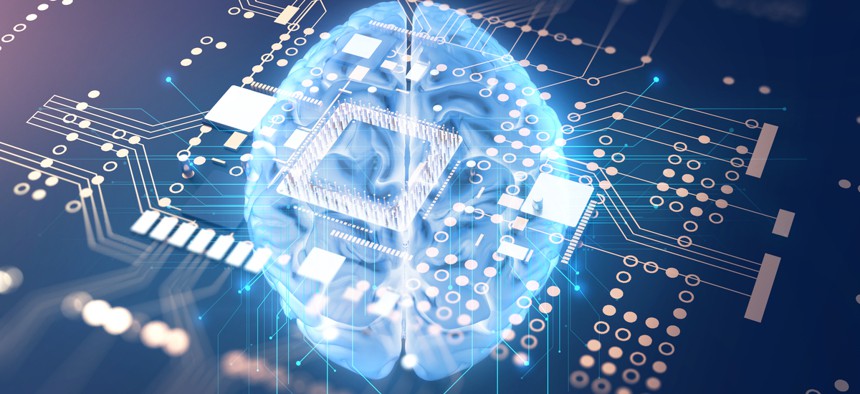The Reality vs. Hype About Automation, AI and Self-Healing

whiteMocca/Shutterstock.com
Automation will become increasingly important as federal agencies look to optimize their networks.
How close are we to true automation, AI and self-healing networks in the federal government? Is hype outpacing reality?
The answer is complicated. While the federal government has funded research into artificial intelligence for years, widespread commercial applications have been elusive. Automated, self-healing (and self-driving) networks have been on government agencies’ planning boards for the past few years. Yet despite significant advancements over the past year, all of these initiatives remain in their infancies in the federal sector.
That will begin to change this year and beyond. We will see automation become increasingly important as agencies seek to maximize their investments in technology and personnel. Here are some things to look for that will mark this progression:
Network Managers Will Become Software Programmers
Instead of individual network operators logging onto individual network devices or using network operations support systems to push demands to those devices, managers will write software designed to recognize a particular intent. That intent will automatically be pushed out to different network elements through standards-based APIs. The program developers create will ultimately evolve from configuring day-to-day operations (first-level automation) to event-driven automation that is able to proactively resolve faults based on changing network conditions.
AI Will Begin to Make Critical Network Decisions
First-level and event-driven automation will lay the foundation for AI and self-driving networks in the federal government. Instead of just using automation to provision a large number of network elements or event-driven tasks, agencies will begin leveraging AI to automatically make decisions on how to re-optimize their networks based on conditions that have not yet occurred. For example, an AI system may automatically adjust network resources to provide ample bandwidth for a particular upcoming live-streaming event before the event takes place.
AI Will Play an Important Role in Cybersecurity—But So Will People
Over time, we will see AI begin to make automated and proactive decisions regarding securing the fabric of government networks. Machines will begin to learn what to look for in regards to potential security risks and be able to automatically respond to those threats based on previously gathered intelligence. Networks will truly be able to heal themselves and adapt to become better fortified against future threats. People will remain essential, however; their expertise and knowledge will be required to manage their agencies’ overall cybersecurity strategies and monitor for potential false positive alerts.
The Integration of Data and Automated Monitoring Will Result in Better Overall Performance
The integration of application performance data and automated monitoring systems will allow for faults to be detected earlier and corrected automatically -- and will also lead to better application and network performance. For instance, administrators may not be able to anticipate a sudden spike in requests for a certain web-based application. However, integrating performance data with automated monitoring resources will enable the network to automatically increase bandwidth levels and compute resources appropriately.
Pre-packaged Network Automation Solutions Will Become Standard
Many federal IT teams simply do not have the time, knowledge or resources to take advantage of all automation and AI have to offer. As a result, pre-packaged network automation solutions will begin to gain significant traction. Agencies will be able to purchase modular, small packages designed for specific automation tasks and capabilities. By purchasing these packages, or “bots,” agency teams will be able to get up-and-running on automation more quickly and cost-effectively and be able to reap immediate benefits.
Those benefits are closer at hand than one might think, but there is still a bit of a journey ahead. In 2018, we will see government agencies begin by adopting more basic forms of automation, including the development of standards-based interfaces to make the network more programmable. That will ultimately lead to event-driven automation and eventually, further adoption of AI, both of which will greatly improve security, network and application performance.
David Mihelcic is the federal chief technology and strategy officer for Juniper Networks.


